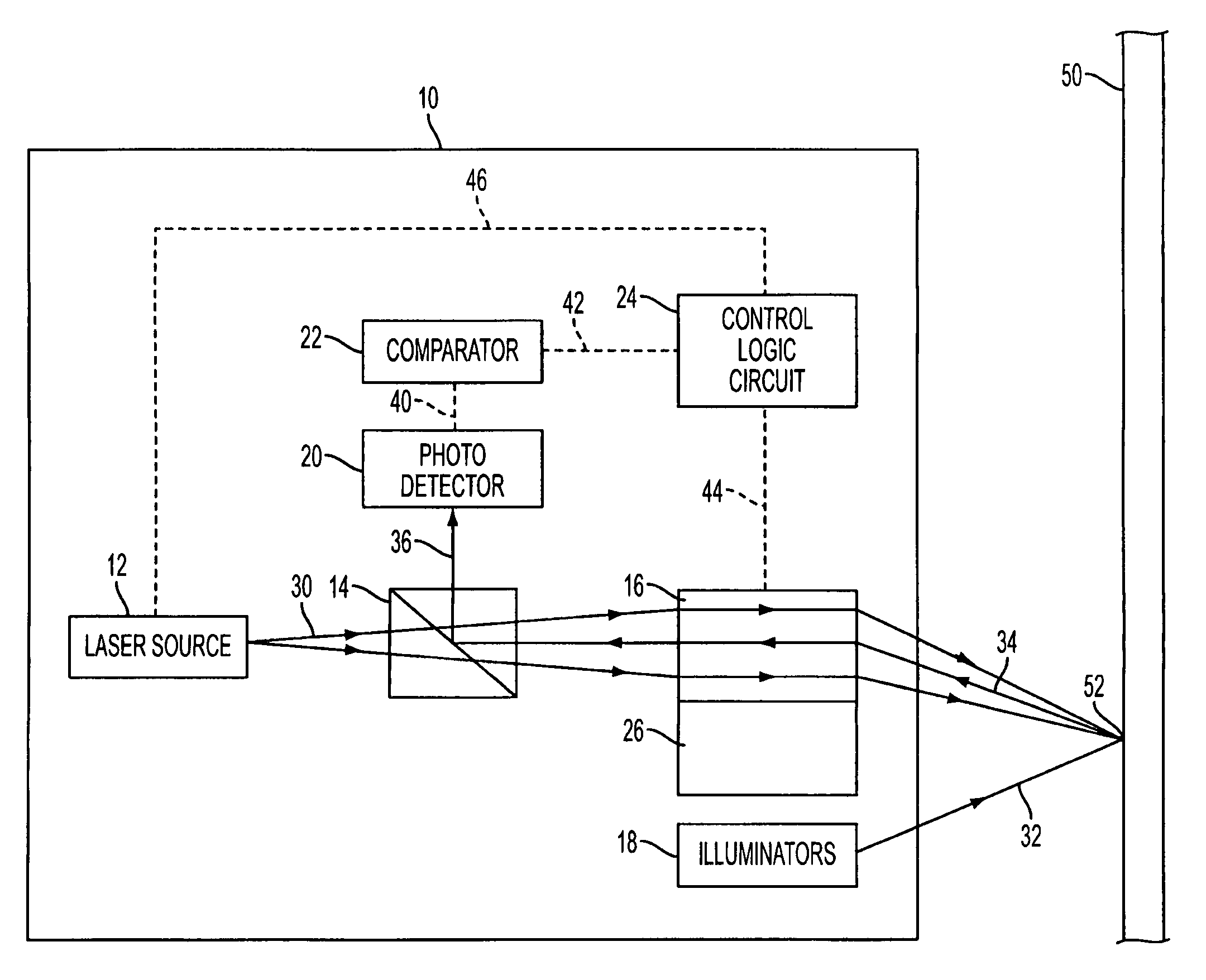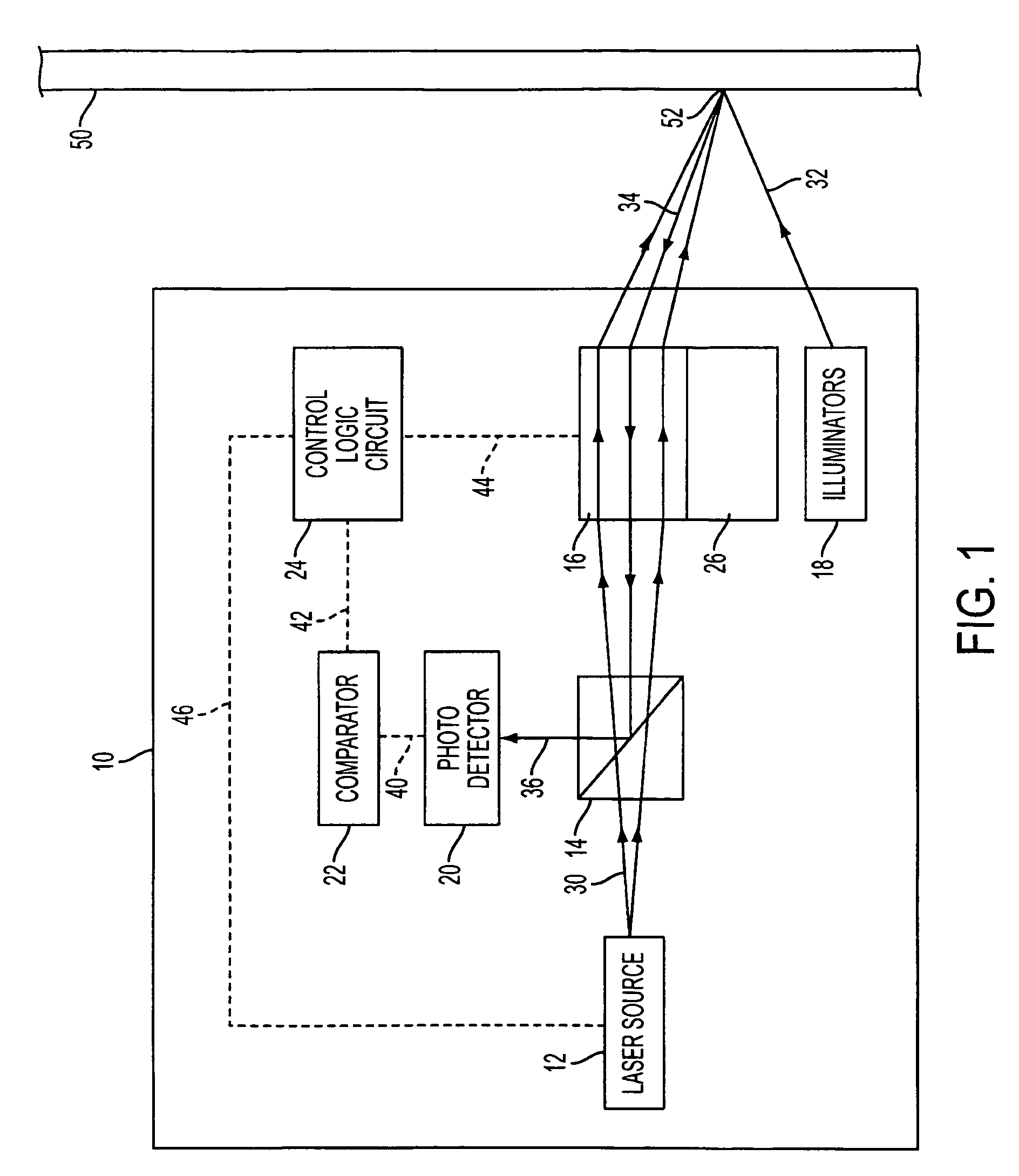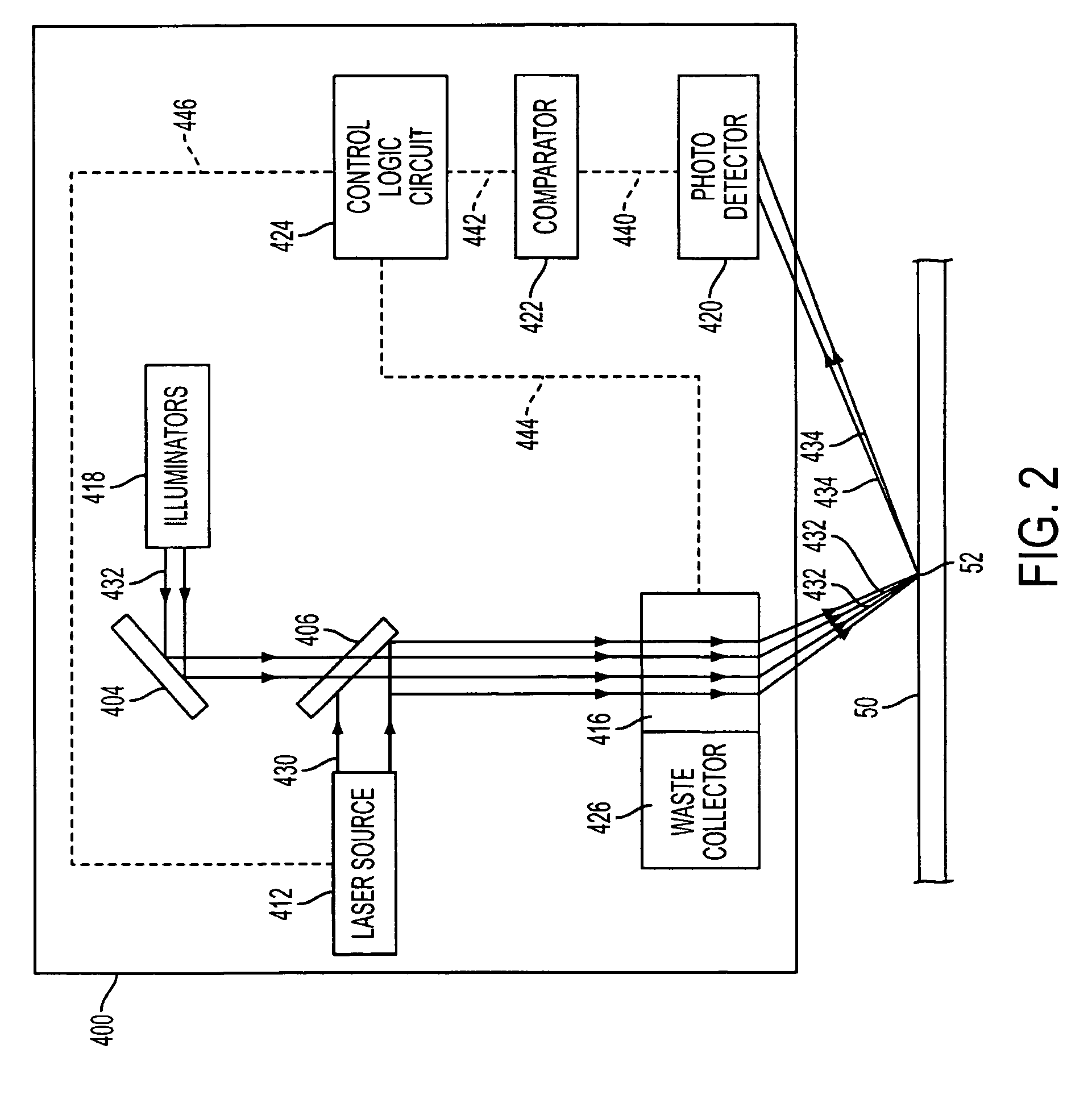Methods for stripping and modifying surfaces with laser-induced ablation
a technology of laser-induced ablation and surface modification, which is applied in the direction of cleaning using liquids, instruments, manufacturing tools, etc., can solve the problems of reducing the use value of laser-induced ablation, affecting the quality of laser-induced ablation, and affecting the effect of laser-induced ablation on the surface,
- Summary
- Abstract
- Description
- Claims
- Application Information
AI Technical Summary
Benefits of technology
Problems solved by technology
Method used
Image
Examples
Embodiment Construction
[0041]Embodiments of the coating removal apparatus utilize various optics paths to provide laser pulses to a coated surface, to direct a light illumination to the coated surface, and to direct the reflected light from the coated surface to a photosensitive detector and analyzer. In some embodiments, the apparatus is an integrated device including a laser source, a beam splitter, scanning optics including actuating means for adjusting the scanning optics, a waste removal apparatus, one or more light illuminators, a photosensitive detector, a comparator, and a control logic circuit. In other embodiments, the apparatus is divided into separate components, such as a head component and a body component, each of which is coupled via fiber optic cables and / or power lines.
[0042]FIG. 1 illustrates an exemplary block diagram of a coating removal device according to an embodiment of the present invention. The coating removal device 10 is an integrated device that includes a laser source 12, a ...
PUM
| Property | Measurement | Unit |
|---|---|---|
| depth | aaaaa | aaaaa |
| depth | aaaaa | aaaaa |
| wavelengths | aaaaa | aaaaa |
Abstract
Description
Claims
Application Information
 Login to View More
Login to View More - R&D
- Intellectual Property
- Life Sciences
- Materials
- Tech Scout
- Unparalleled Data Quality
- Higher Quality Content
- 60% Fewer Hallucinations
Browse by: Latest US Patents, China's latest patents, Technical Efficacy Thesaurus, Application Domain, Technology Topic, Popular Technical Reports.
© 2025 PatSnap. All rights reserved.Legal|Privacy policy|Modern Slavery Act Transparency Statement|Sitemap|About US| Contact US: help@patsnap.com



